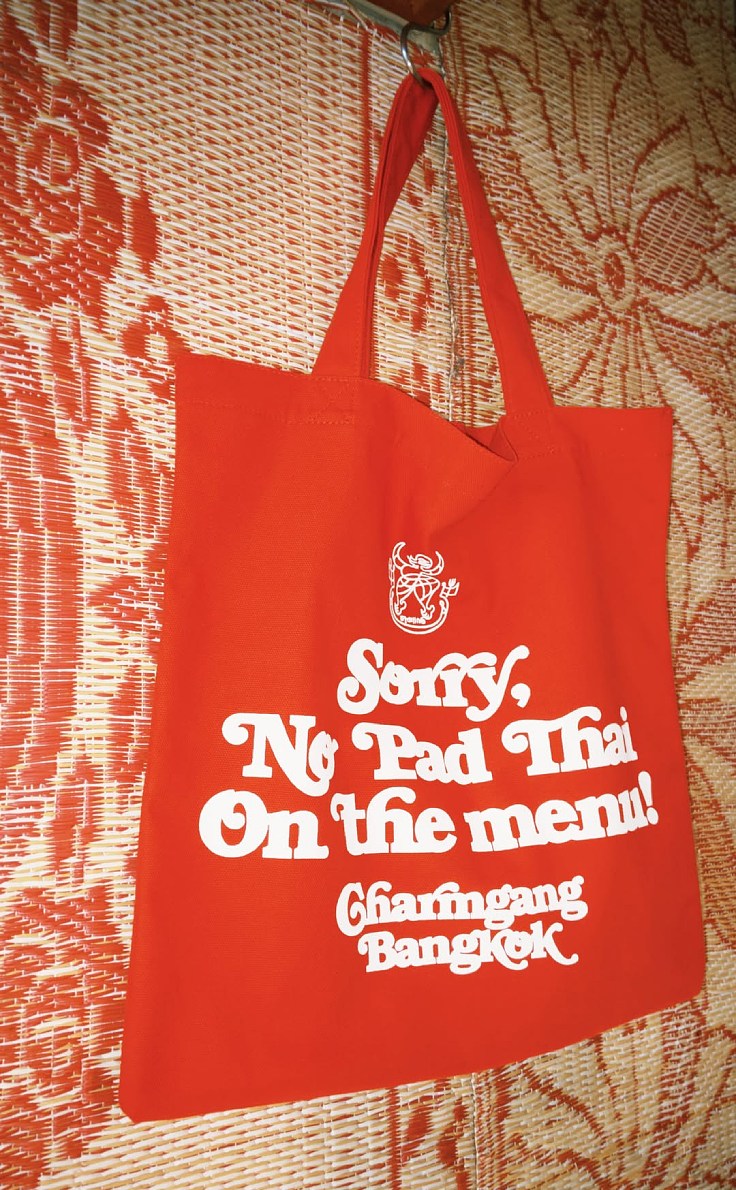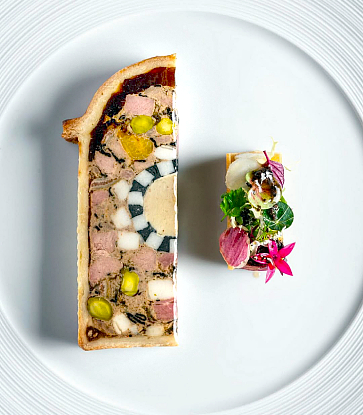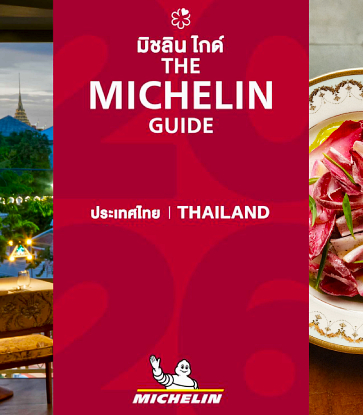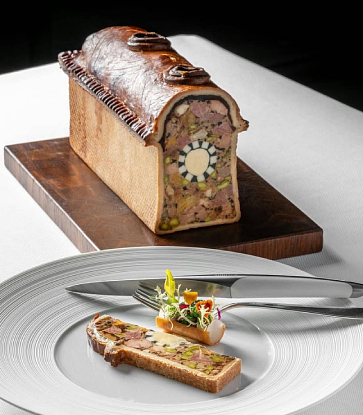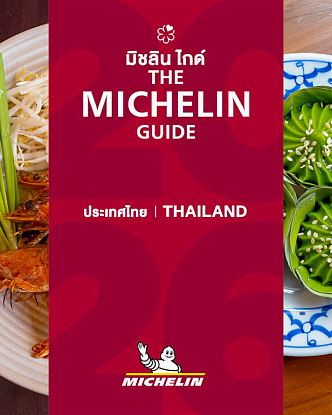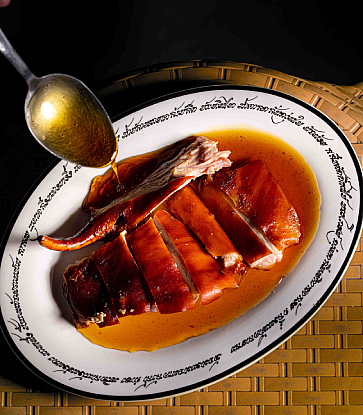Like countries around the world, Thailand has its version of “sausages.” Unique identities of different regions are also reflected in this delicious food staple, letting you enjoy distinctive tastes and learn about cultures at the same time.
The MICHELIN Guide takes you throughout Thailand. Let’s explore sausages across The Land of Smiles together with great dining places.

Northeast
Sai Krok Isan
Originating from the northeast, Sai Krok Isan (Northeastern sausage) is the most popular type of Thai sausage. You can find it everywhere in the country. The defining characteristic of Sai Krok Isan is the sour kick from the wisdom of food preservation. The longer you let it ferment, the tangier it becomes. Its main ingredients are pork and lard in a balanced ratio. Some also add pork skin for more texture. Sticky rice helps with fermentation and gives the sausage a distinctive tanginess. Season it with rock salt from local saline ponds for an umami taste. Sai Krok Isan comes in both short and long links. The fragrant smell of coriander root, pepper, and garlic is irresistible. Freshly grilled Sai Krok Isan with sides of raw cabbage, ginger, bird's eye chilli, peanuts, and spicy dipping sauce are simply divine.
Mam
Mam (pronounced similarly to the informal word for “eat”) is another northeastern sausage. The difference between Mam and Sai Krok Isan lies in the use of intestines such as the liver or spleen. Mam’s main ingredients include pork, beef, and sometimes buffalo meat, mixed with seasonings such as garlic and ground roasted rice. Different meats will give the sausage slightly different names. Mam Mu is made from pork while Mam Nua is beef. Mam showcases the northeast’s food wisdom of preservation and waste minimisation. Instead of just meat, more parts are used to make this local sausage that gives out pleasant flavours and smells.Try here: There are authentic restaurants selected by MICHELIN Guide across the northeastern region. Praprai, Tumkratoei Sagate, Prasit, and So Jeng in Khon Kaen. View Mun, Krua Samchai, Som Tum Jinda in Ubon Ratchathani. Krua Khun Nid and Lab Nua in Udon Thani. Laab Somphit and Kai Yang Sueb Siri in Nakhon Ratchasima.

North
Sai Ua
In the northern dialect, “ua” means to stuff. The aroma of this northern staple comes from several herbs such as dried chilli, garlic, cumin, lemongrass, coriander root, shallot, kaffir lime leaves, and galangal. There are also seasonings such as shrimp paste, salt, etc. Sai Ua can be found at every kad (market) throughout the northern provinces. It’s one of the popular souvenirs tourists carry back for their friends and families. Freshly grilled Sai Ua with sticky rice alone can rival any sausage dish in the world. But, imagine it as a part of a Khan Tok meal, an assortment of small dishes that complement one another which usually includes pork crackling, Nam Prik Num (Green Chilli Dip), Nam Prik Ong (Spicy Pork and Tomato Dip), and Jin Som (Fermented Pork).Try here: There are authentic restaurants selected by MICHELIN Guide across the northern region. Visit Krua Phech Doi Ngam, Kiti Panit, Lumdee Te Khuadang, Han Thueng Chiang Mai, Huen Muan Jai, Huan Soontaree, Kinlum Kindee, Krua Lawng Khao, and markets across Chiang Mai and other norther provinces.

Central
Sai Krok Khao
Sai Krok Khao (Rice Sausage) is Central Thailand’s traditional sausage. The ingredients may be similar to Sai Krok Isan, but the portion and type of rice are different. Sai Kork Khao usually uses cooked rice instead of sticky rice. The ratio of cooked rice to pork is higher than the northeastern counterpart. Pork is mixed with garlic, pepper, coriander root, and salt. The result is salty and peppery sausage instead of tangy bangers.
Sai Krok Pla Naem
Sai Krok Pla Naem was invented during the reign of King Rama 2. Its unique recipe mixes snakehead fish with pork and ground-roasted rice before adding pickled garlic, lime juice, and bitter orange skin. You get Pla Naem to enjoy with Sai Krok Khao or traditional pork sausage. The combination is the ultimate snack.Try here: Try scouring local or long-standing markets in Central Thailand such as Or Tor Kor Market, Nang Loeng Market, or Bang Lamphu Market.

South
Innovative Taste of the South
Although southern Thailand doesn’t have traditional sausages, new generations of food scientists and chefs have been striving for innovation. The results are delicious sausages from Phattalung and Songkhla, similar to central Sai Krok Khao. But, because food is universally enjoyed and exchanged, it’s unsurprised to see Khua Kling Paste Sausage as a souvenir. There’s also the innovative Fish Kidney Sausage by Trang Industrial and Community Education College (TIC). The famous Gaeng Tai Pla (Spicy fish entails curry) is turned into a sausage that you can easily bring back to your loved ones. The South also has its own food preservation technique called “Nang.” Meat is mixed with ingredients and left for fermentation. The method is similar to northern Naem or Jin Som.Where to find: Souvenirs shop across the South or festival stalls.
Now that you have learned about the sausages of Thailand, it’s time to plan your gastronomic journey. Keep your eyes out for these delicious snacks and souvenirs while travelling. For updates on travel destinations, contact TAT Call Centre 1672, or Facebook TAT Contact Centre.







